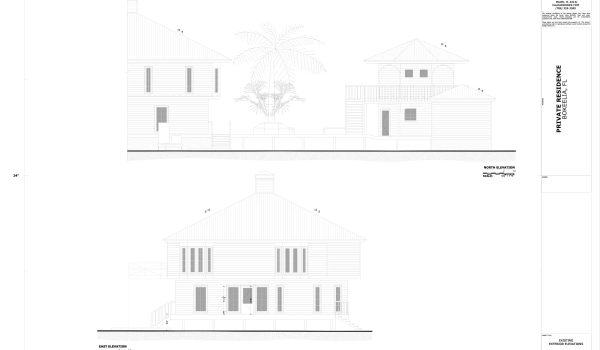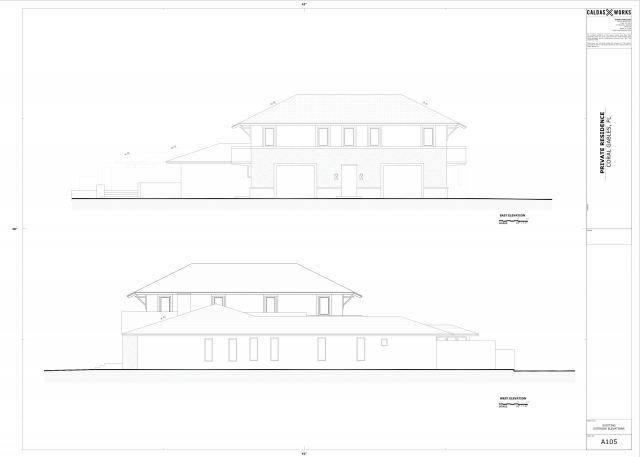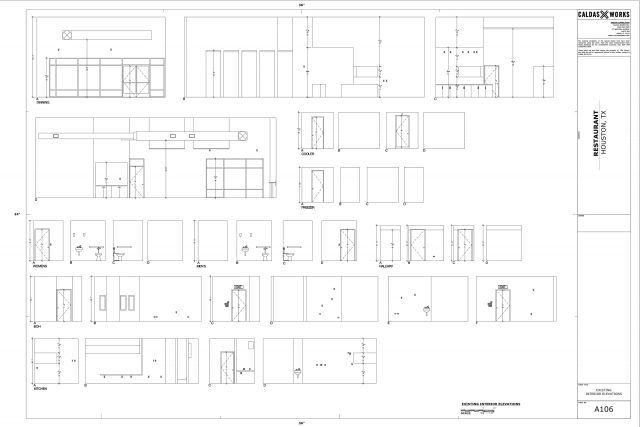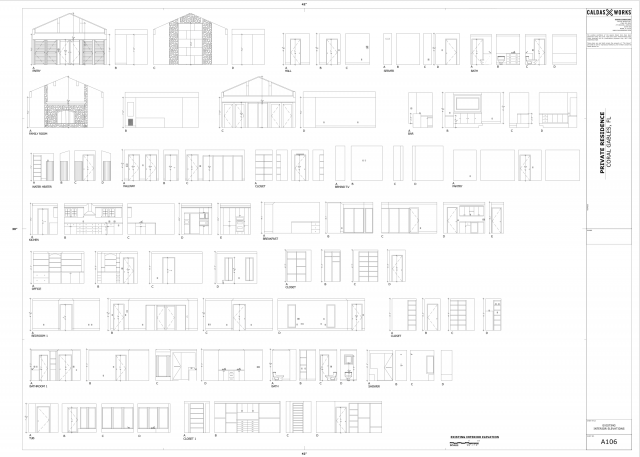Elevation drawings
Architects and designers use elevation drawings (both interior and exterior elevations), to communicate the aesthetic and structural elements of a project to builders and contractors.
The detailed information in these drawings allows construction teams to align on design specifications, ensuring that the building’s final appearance meets the original plan. This is especially valuable for projects involving historic buildings or renovations, where maintaining the original appearance is essential.
Elevation drawings also help ensure that any changes or additions to a structure complement the original design. As-built exterior elevation drawings are especially helpful because they capture the current state of the property, reflecting any modifications made over time.
What are exterior elevations?
Exterior elevations are architectural drawings that show the outside views of a building, detailing its design, structure, and materials. Interior elevations show interior walls, windows and doors, and any visible structural elements.These drawings provide a visual representation of each exterior & interior side of a property, including the front, back, side and interior views.
Typically, exterior elevations include important details such as wall heights, window and door placements, materials, and roofing. They serve as a blueprint for understanding the architectural style and layout of the building’s exterior.
Elevation drawing application
Why are elevation drawings so important?
Exterior elevations are also critical for property owners and stakeholders in visualizing the look and feel of the finished project. By providing a clear understanding of what the exterior will look like, these drawings assist in making informed decisions about materials, colors, and design elements.
They are often used in presentations to clients, city planning boards, or other regulatory entities. You can gain necessary approvals, especially when exterior aesthetics are a concern for zoning or historic preservation requirements.
Who uses exterior elevation drawings?
Real estate professionals can also benefit from these drawings as they showcase the property’s design to prospective buyers. Additionally, city or county permit offices often require exterior elevation drawings to ensure the project complies with local building codes.
For a seamless remodeling or construction process, as-built exterior elevations offer an accurate record of the building’s current condition, allowing architects and contractors to plan new work accordingly.
Overall, exterior elevations play a crucial role in the building design and construction process, from initial concept to final construction, ensuring aesthetic cohesion and compliance with architectural and regulatory standards.
What are interior elevation drawings?
Interior elevations are architectural drawings that provide a detailed view of the inside walls of a building. Furthermore, they display essential elements such as windows, doors, cabinetry, fixtures, and finishes. Unlike floor plans, which show a layout from above, interior elevations focus on the vertical view of interior walls. These drawings illustrate the height, placement, and arrangement of objects within a space, offering a clear visual of the interior design.
Architects, designers, and builders use interior elevation drawings to communicate important design details during a construction or renovation project. They help ensure that each element aligns precisely with the intended design and function, making them invaluable for projects requiring detailed craftsmanship or custom installations, such as kitchens, bathrooms, or feature walls. For example, an interior elevation might show the exact height of countertops, placement of shelving, or positioning of lighting fixtures. Interior elevations thus prevent miscommunication and minimize errors during construction. They help contractors understand where each feature goes, down to the smallest detail.
Interior elevations & permits
Interior elevations are also crucial for property owners and clients. They provide a tangible sense of how spaces will look and feel. Seeing the design on paper before construction starts helps clients visualize elements. Items like cabinetry finishes, tile patterns, and decorative trim placements. For compliance purposes, as-built interior elevations document any modifications made over time. As-built drawings reflect the current condition of a building’s interior, capturing changes in layout or fixtures that may differ from the original plans. This record is especially useful for ongoing renovations, future maintenance, or resale purposes. It provides accurate information on what exists within the structure.
City or county permitting offices may also require interior elevation drawings to review that certain safety codes, accessibility standards, and regulations are met. Real estate agents and appraisers may use these drawings when assessing property value, as detailed interiors can affect market value. Overall, interior elevation drawings play a fundamental role in architectural planning and construction. They ensure every aspect of the interior space is built according to specification.




